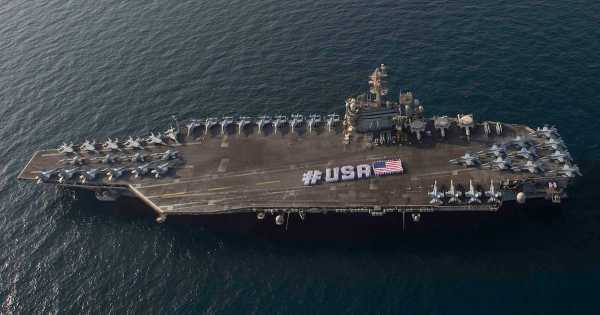

The Defense Department plans on investigating the Navy’s response to the spread of the novel coronavirus (COVID-19) among its warships, according to an announcement from the Pentagon’s top watchdog.
The Pentagon’s Office of the Inspector General on Monday announced plans for an evaluation “to determine whether the Navy has implemented policies and procedures to prevent and mitigate the spread of infectious diseases, such as coronavirus-disease-2019 (COVID-19), on ships and submarines.”
The secondary objective of the evaluation is to “determine whether mitigation measures that are effective in preventing the spread of COVID-19 were implemented across the fleet,” according to the IG, which will focus on the offices of the Chief of Naval Operations, U.S. Fleet Forces Command, and U.S. Pacific Fleet.
The DOD IG evaluation comes amid a tumultuous time for the service after COVID-19 outbreaks sidelined aircraft carrier USS Theodore Roosevelt and guided missile destroyer USS Kidd.
In particular, the outbreak aboard the Theodore Roosevelt prompted the carrier’s now-ousted commander, Capt. Brett Crozier, to plead with the Navy for additional resources to halt the spread of COVID-19 aboard his vessel, writing in a letter to his superiors that sailors “do not need to die.”
Crozier’s letter to Navy leaders, which was subsequently leaked to the San Francisco Chronicle, sparked a chain of events that culminated in the resignation of Acting Navy Secretary Thomas Modly on April 7 over his handling of Crozier’s dismissal.
The following week, 41-year-old Theodore Roosevelt sailor Aviation Ordnanceman Chief Petty Officer Charles Robert Thacker Jr. died at U.S. Naval Hospital in Guam of complications due to COVID-19.

As of April 30, 1,102 sailors aboard the Theodore Roosevelt and 78 sailors on the Kidd had tested positive for COVID-19, according to the Navy, which has since stopped releasing data for both vessels.
The Navy had previously announced that sailors aboard 26 warships had contracted COVID-19 while personnel aboard an additional 14 vessels had recovered from the illness.
Beyond the Roosevelt and the Kidd, none of the affected vessels were at sea, prompting Defense Secretary Mark Esper to boast that just two outbreaks among the 90 vessels currently under way constitutes “a pretty good record.”
“The statistics show that the safest place to be is on a deployed Navy ship as compared to one that’s in port,” Esper said last week.
As Task & Purpose reported, an April 30 report from the Defense Health Agency contradicts this assessment, which notes that, due to close quarters and cramped workspaces, “DoD shipboard populations are at increased risk of COVID-19” whether they’re in port or not.
Speaking to reporters last week, Chairman of the Joint Chiefs of Staff Gen. Mark Milley stated that, beyond social distancing and the wearing of masks, the Navy had introduced the “quite strict” protocols that include isolating sailors for up to 21 days before getting underway.
“I’m very, very confident the Navy’s instituted some very disciplined and rigorous protocols to protect the sailors on board the ship as they embark,” Milley said.